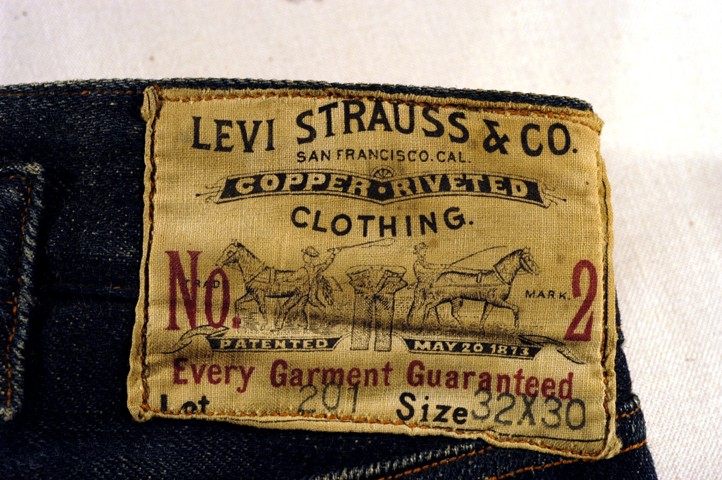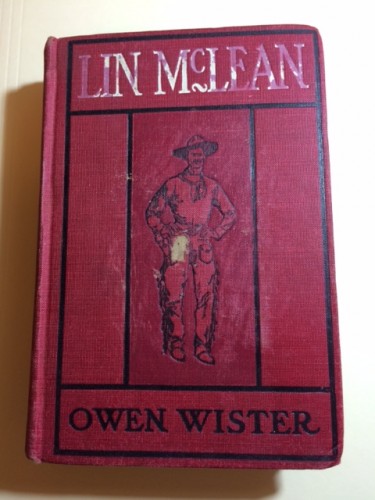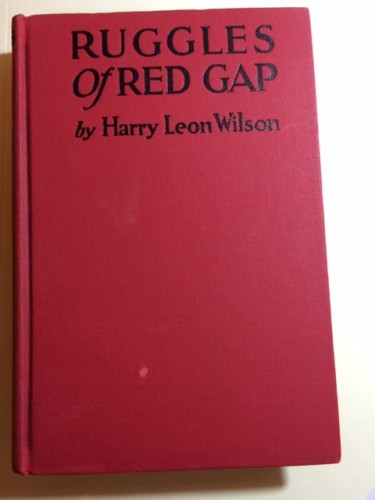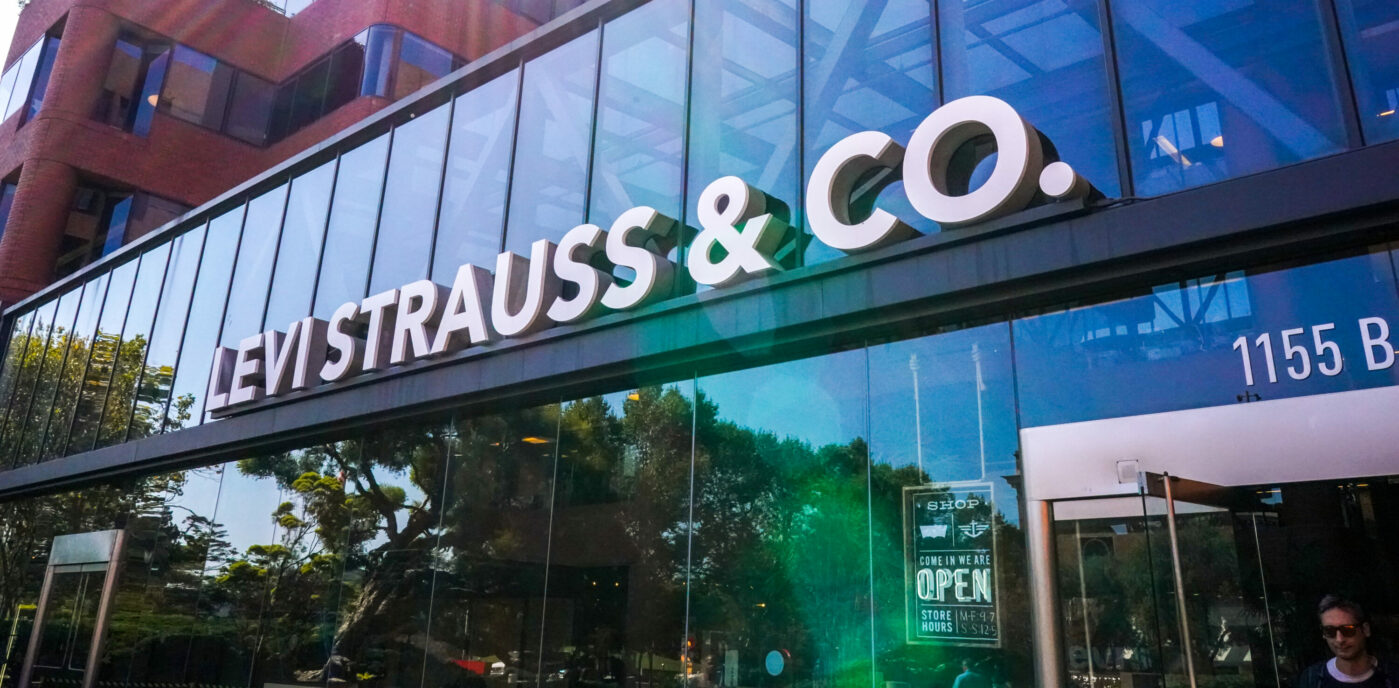Pennsylvania-born Owen Wister is sometimes called the father of the classic western novel. Like his hero, Theodore Roosevelt, he spent a lot of time in the West. In 1902 he published The Virginian: A Horseman of the Plains, which is considered to be the first in the genre, with all of the elements we associate not only with novels, but with movies: steely-eyed, lone cowboys, gunfights, cattle rustling, etc. Five years before, however, Wister had published Lin McLean, another cowboy story. And in both books, Wister has his characters wear Levi’s® jeans.
When the books were published, jeans were still called “overalls.” Lin McLean is in Nevada prospecting for gold, without much luck, and sometimes wandered along the river where men squatted with their gold pans, dipping them into the rushing stream. “Passing each busy prospector, Lin would read on every broad, upturned pair of overalls the same label, “Levi Strauss, No. 2” with a picture of two lusty horses hitched to one of these garments and vainly struggling to split them asunder. Lin remembered he was wearing a label just like that, too…”
So what was “Levi Strauss, No. 2”? That was the Lot 201 jean, introduced in 1890 as a less expensive version of the premium, No. 1 product, the 501® jean.
In an early scene in The Virginian, the title character has to spend the night in a communal room with a bunch of cowboys and traveling salesmen. Arriving in the dead of night, his companions can only hear his progress through the unlit room. “The rip of swift unbuttoning told us that the black-headed guy must now be removing his overalls.”
Both of these books are set in Wyoming, where Wister spent most of his time, and a place where Levi’s overalls were worn very early after their invention in 1873.
In Ruggles of Red Gap, published in 1914, Harry Leon Wilson sends a British butler to the wilds of Washington state, and hilarity ensues. Ruggles is taken aback at what the men are wearing, however. On a visit to a loner living in a cabin in the woods, the butler is shocked to see him wearing overalls that are “faded and quite wretchedly spotty.” When he sees the famous Two Horse patch on the back of the pants, he has only one thing to say. “I mean to say, one might be reduced to overalls, but this blatant emblem was not a thing any gentleman need have retained.”
Moving closer to our own time, the most famous modern novel to feature Levi’s brand clothing is Jack Kerouac’s classic On The Road. While in Denver, the main character, Sal Paradise, meets Stan, whom he describes as wearing “a levi outfit, jacket and all.”
Kerouac was one of the creators of the “Beat” movement in America. Another was poet and novelist Charles Bukowski. He has the last word on Kerouac’s influence on both culture and the adoption of Levi’s brand clothing for years to come, attesting to the power of great literature.
“Kerouac opened a million coffee bars and sold a million pairs of Levi’s to both sexes.”
ABOUT THE AUTHOR
 Lynn Downey was the Levi Strauss & Co. Historian from 1989 to 2014. She is the author and/or co-author of nine books on the history of the West, including a number of works about the history of LS&Co. She has also published over thirty articles and book reviews. Lynn is currently at work on a biography of Levi Strauss, which will be released in 2016. Her website is at http://www.lynndowney.com.
Lynn Downey was the Levi Strauss & Co. Historian from 1989 to 2014. She is the author and/or co-author of nine books on the history of the West, including a number of works about the history of LS&Co. She has also published over thirty articles and book reviews. Lynn is currently at work on a biography of Levi Strauss, which will be released in 2016. Her website is at http://www.lynndowney.com.










